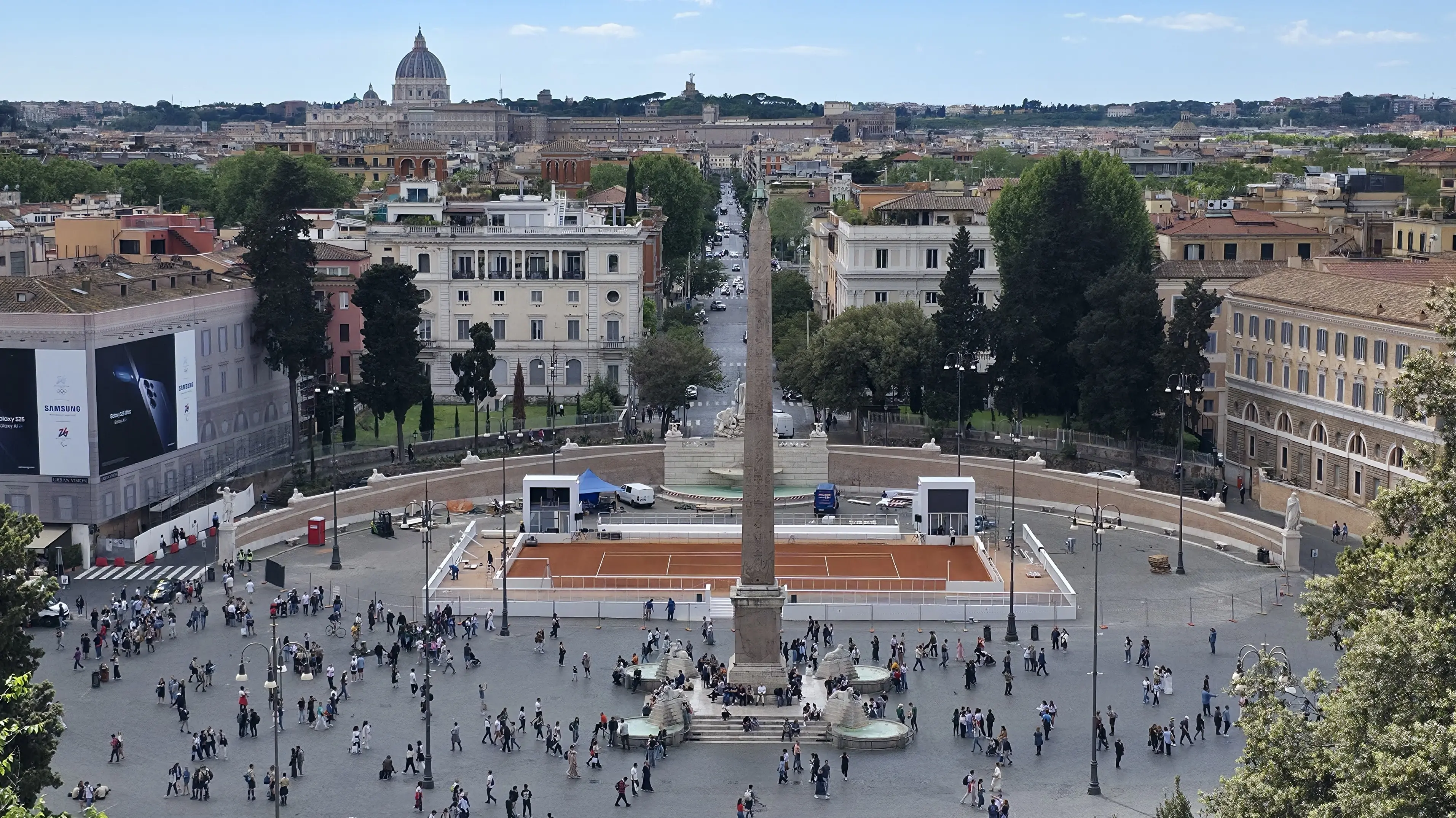Ciao, my sweet adventurers! 💕 In a city filled with unforgettable piazzas, Piazza del Popolo holds a special kind of magic – sweeping, elegant, and cinematic, it feels like Rome’s grand front door. If you’ve ever arrived in the city from the north (as many did for centuries), this is where Rome would welcome you, with obelisk-topped splendor, sun-drenched symmetry, and history whispering from every stone. Join me as we wander through Piazza del Popolo together, one of the most beautiful open-air stages in the Eternal City.
A Brief History: From Public Gate to Civic Gem
“Popolo” means people, and this piazza truly has always belonged to the people, though its origins are layered. In antiquity, this was the northern gateway to Rome, just inside the Porta Flaminia (now called Porta del Popolo). Travelers arriving on the Via Flaminia would enter the city through this monumental gate, which was later redesigned in the Renaissance by Bernini to greet none other than Queen Christina of Sweden.
But what we see today, the harmonious oval layout, twin churches, and central obelisk, came later. In the 19th century, architect Giuseppe Valadier transformed the square into the neoclassical masterpiece it is now. He smoothed out the angles, added balustrades and symmetry, and connected it gracefully to the Pincian Hill above.
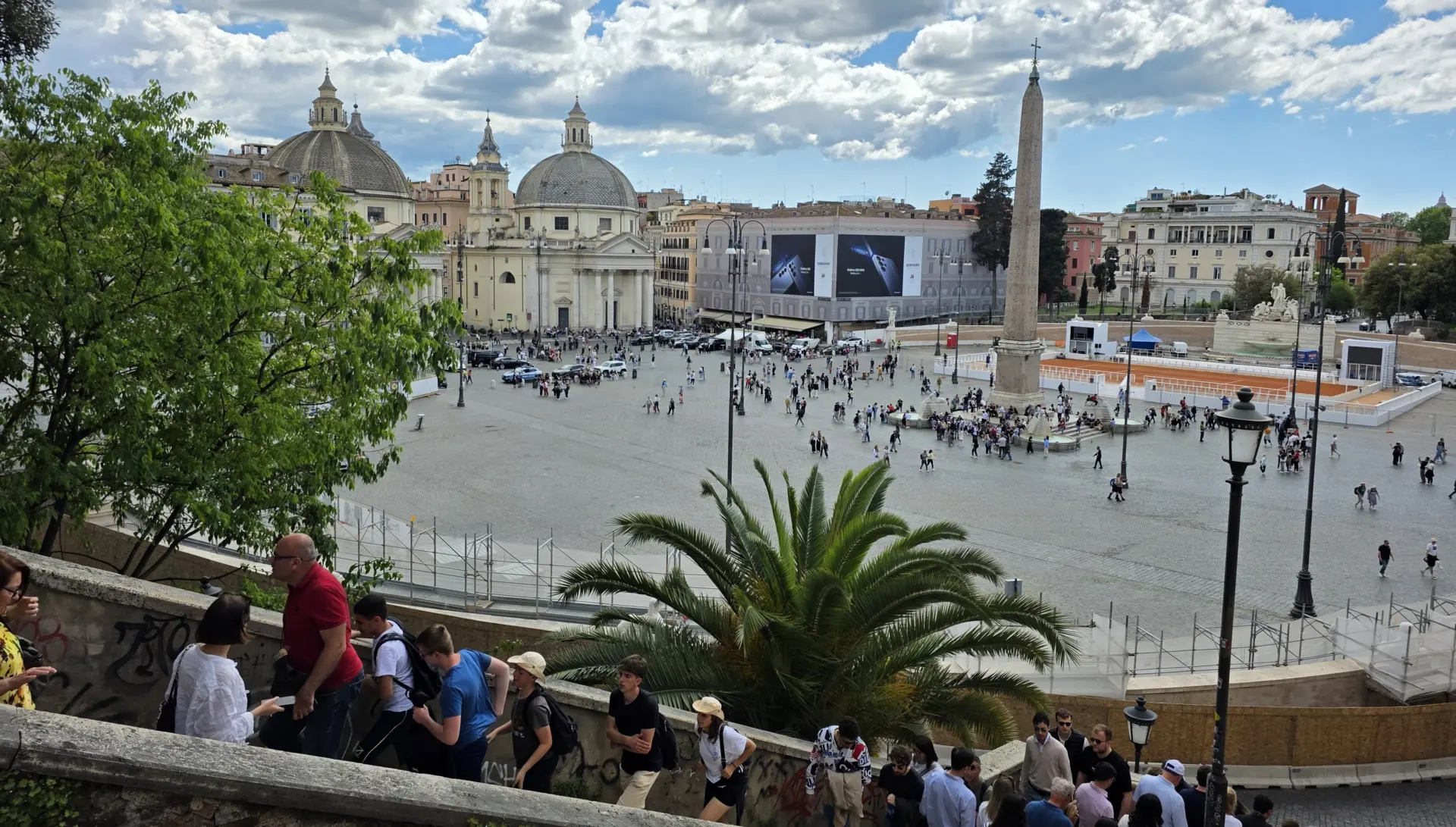
The Flaminian Obelisk: An Ancient Touch
At the very center of the square rises the Flaminian Obelisk, brought from Egypt in 10 BC by Emperor Augustus after his conquest of Egypt. Originally placed in the Circus Maximus, it was relocated here in the 16th century. It’s one of Rome’s oldest obelisks, and it gives the square that iconic, imperial silhouette, reminding visitors that even Rome’s public spaces are steeped in global history.
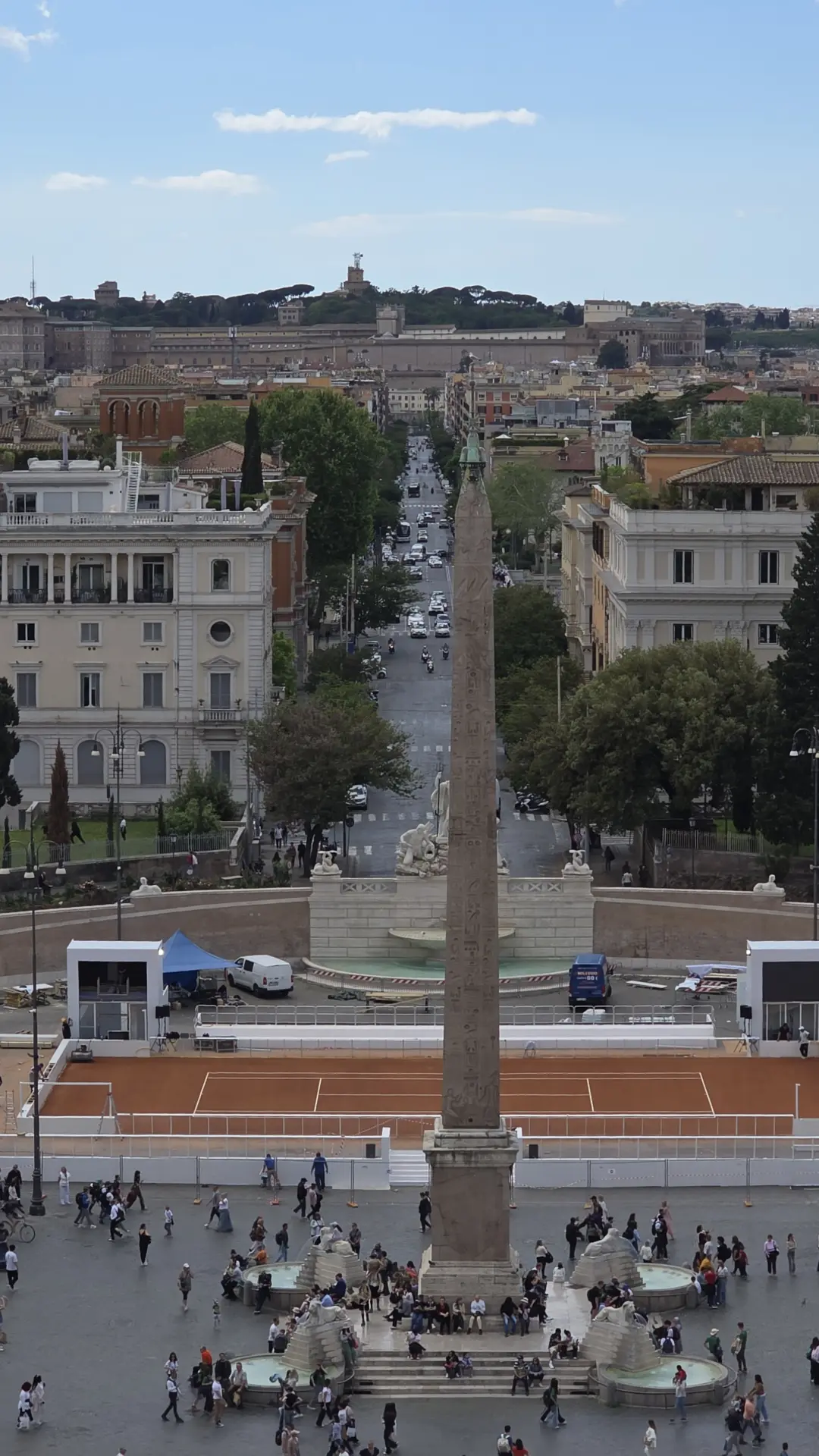
The Twin Churches: Miracoli & Montesanto
One of the most picturesque features of the square is the “twin churches” flanking Via del Corso: Santa Maria dei Miracoli and Santa Maria in Montesanto. They’re not actually identical, Santa Maria in Montesanto has an oval layout while Santa Maria dei Miracoli follows a circular plan, but their design tricks the eye into perfect balance and creates a scenographical welcome for travelers entering Rome.
Commissioned in 1662 by Pope Alexander VII and primarily designed by Carlo Rainaldi, the churches represent a remarkable architectural collaboration. When Pope Alexander VII died in 1667, construction was interrupted and later completed under Carlo Fontana’s supervision, with additional work by Mattia de Rossi, all under Bernini‘s guidance. The churches symbolize heavenly symmetry and spiritual grandeur, serving as grand gateways to Rome’s historic center.
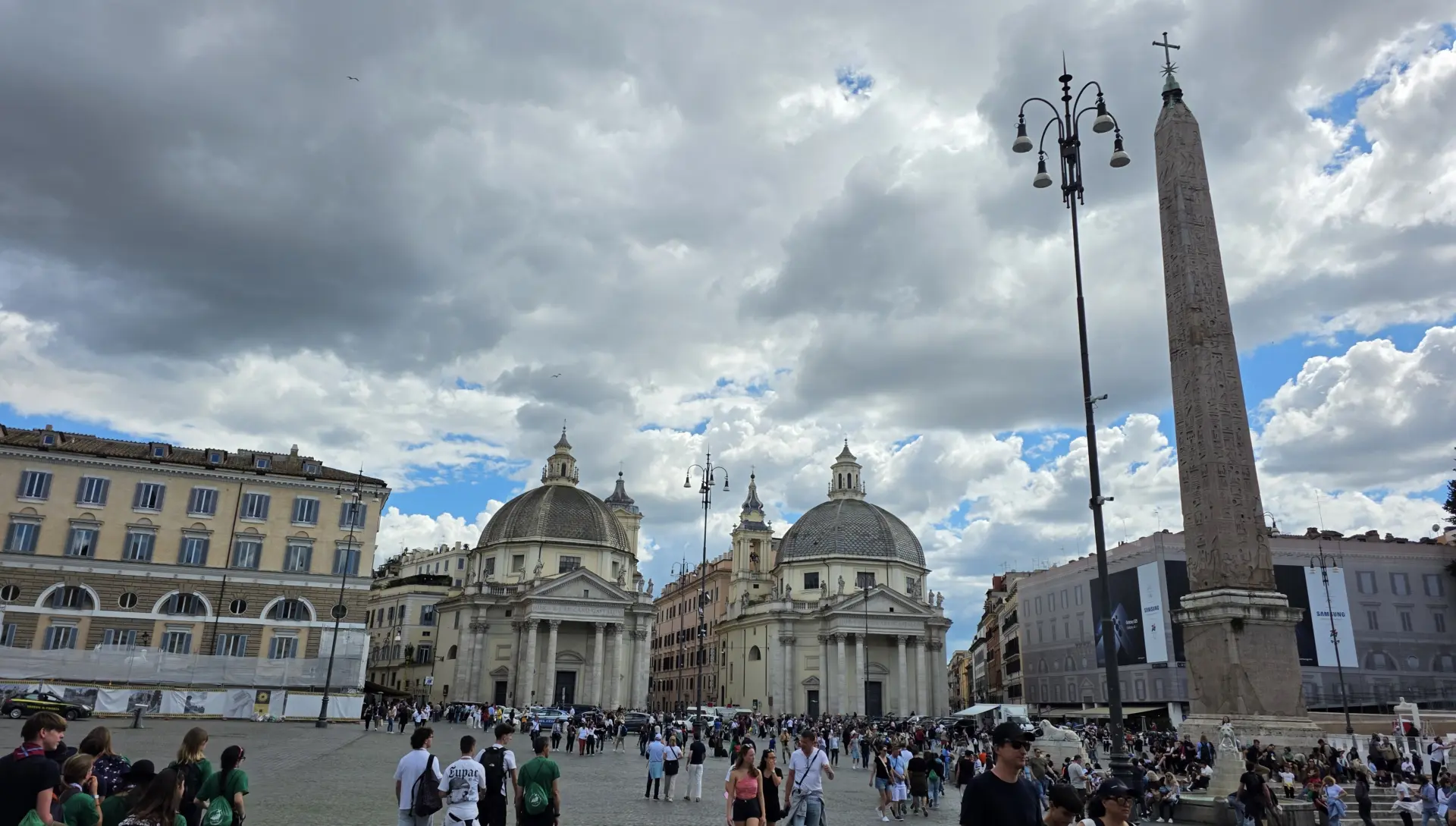
Pop in for a quick peek, they’re peaceful, gilded, and beautifully Roman, embodying the baroque vision of creating visual harmony through architectural ingenuity.
A Masterpiece Inside: Santa Maria del Popolo
At the northern edge of the piazza stands Santa Maria del Popolo, a church that may appear modest from the outside but holds extraordinary artistic treasures within. Inside, you’ll find two striking Caravaggio masterpieces in the Cerasi Chapel: The Conversion of St. Paul and The Crucifixion of St. Peter, both commissioned in 1600. The church also houses the magnificent Chigi Chapel, designed by Raphael and later completed by Bernini, who added his own sculptural contributions including Habakkuk and the Angel and Daniel and the Lion. Raphael’s chapel design was notably inspired by Bramante’s architectural vision for the new St. Peter’s Basilica. It’s a powerful reminder that in Rome, some of the city’s greatest marvels are tucked quietly behind unassuming façades.
Sunset from the Pincian Hill
My favorite way to end a stroll through Piazza del Popolo? Climbing up the Pincian Hill via the elegant curved staircases that wind their way up from the piazza. At the top, you’ll reach Terrazza del Pincio, a scenic viewpoint overlooking the entire piazza and much of Rome beyond. Even during the afternoon, the views are spectacular, you can see across the Roman rooftops to the imposing dome of St. Peter’s Basilica. While it’s renowned as one of Rome’s best sunset viewpoints, the terrace offers breathtaking panoramas throughout the day. It’s romantic, inspiring, and totally unforgettable.
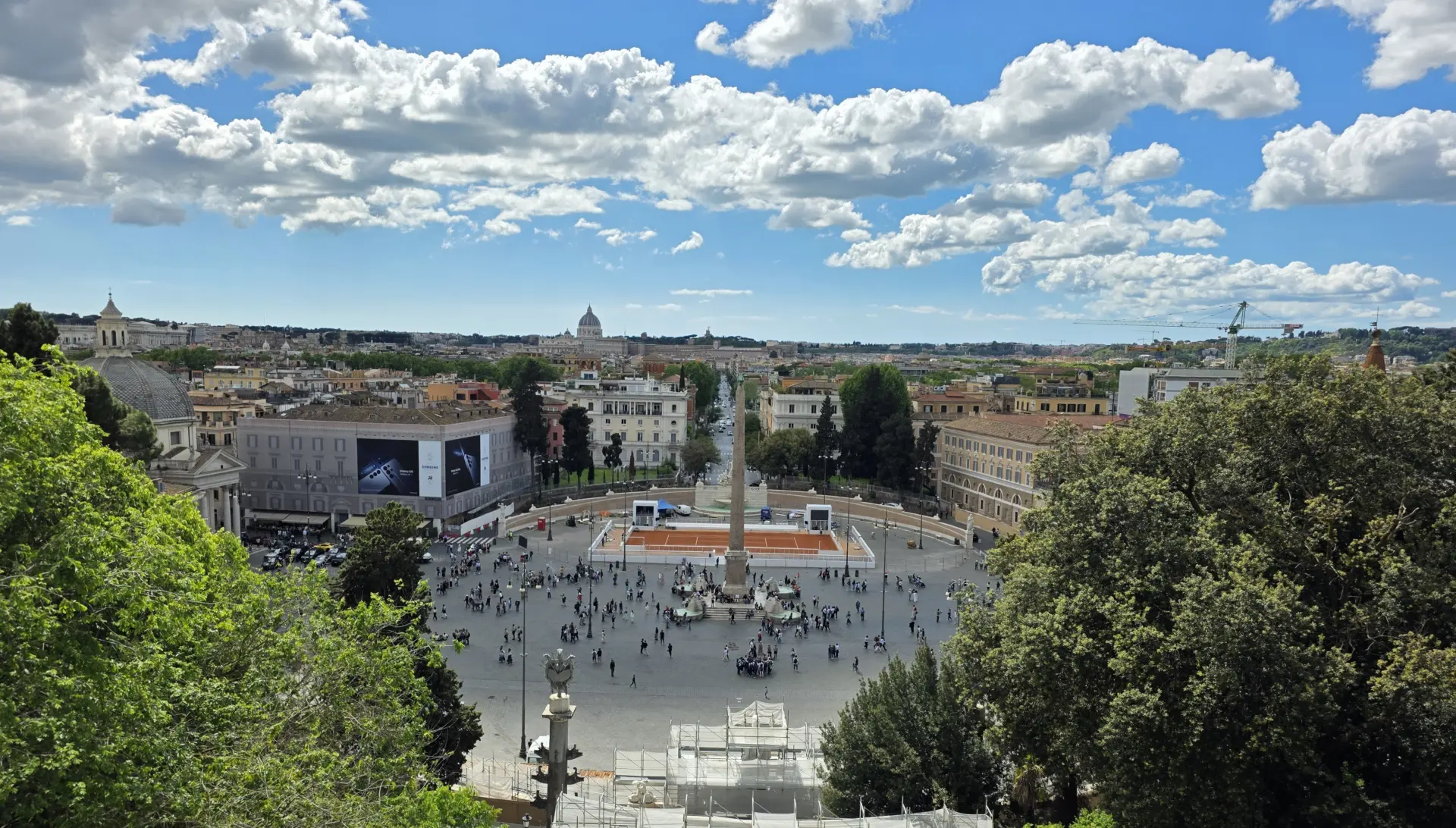
Practical Tips
- 📍 Location: At the starting point of Via del Corso, reachable by metro (Flaminio stop)
- 🚇 Nearest Metro: Flaminio (Line A) – steps from the piazza
- 🎟 Entry: Free and open 24/7 – churches usually close around 7:00 PM
- 📷 Photo Tip: For the best shot, stand at the center of the piazza looking toward the twin churches, or head up to Pincian Hill for a panoramic view
- 🕰 Best Time to Visit: Early morning for quiet beauty, late afternoon or sunset for dreamy golden light
Final Thoughts
Piazza del Popolo is one of those places that speaks without saying a word. It welcomes you with elegance, invites you to slow down, and rewards you with sweeping beauty and centuries of art, faith, and stories.
Whether you’re crossing through on your way to a gelato stop or pausing on the terrace to watch the sun dip below Rome’s rooftops, this piazza makes you feel like you belong to the Eternal City.
Come for the view. Stay for the feeling.
xoxo,
Bubbly 💕

